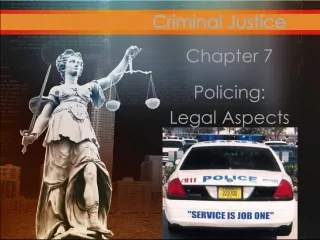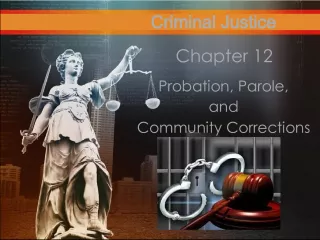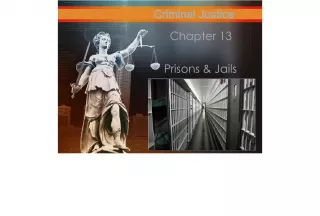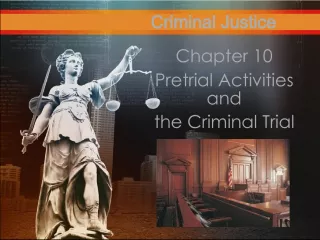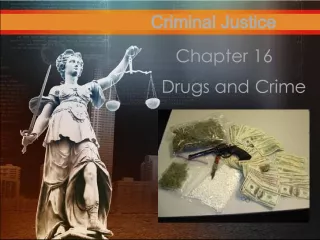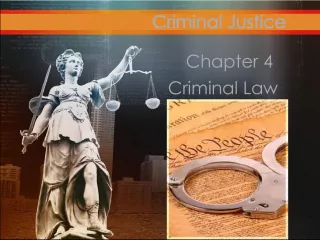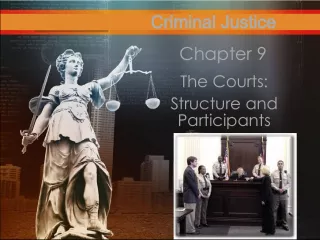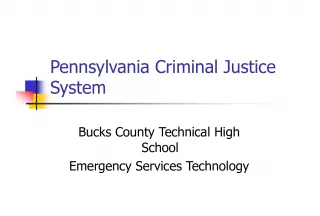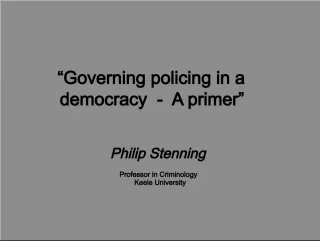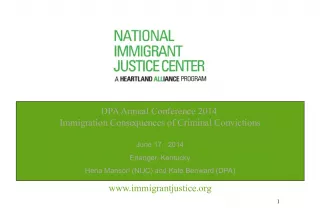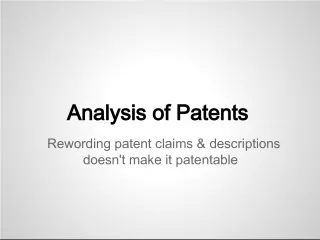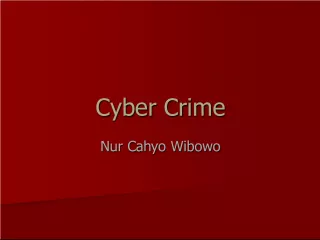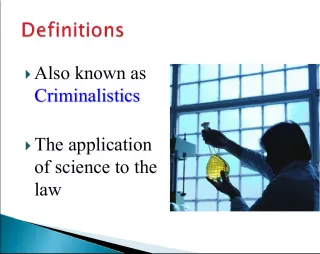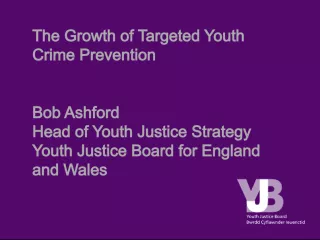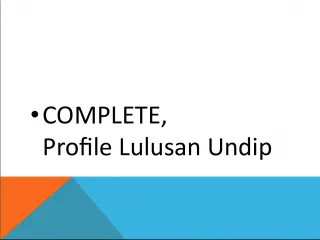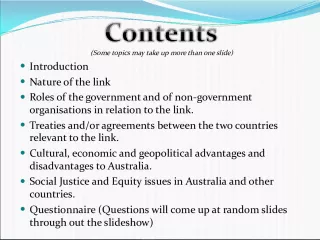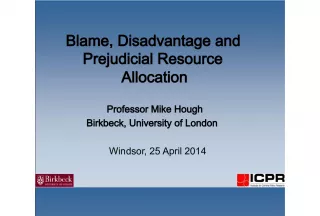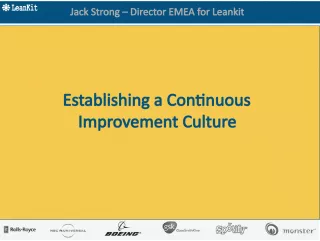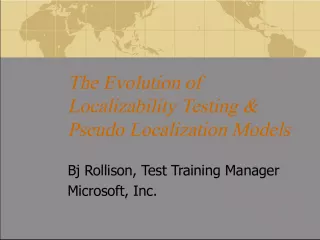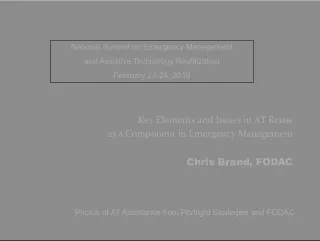Policing Issues and Challenges in Criminal Justice Today


This chapter examines the challenges and issues faced by law enforcement agencies in maintaining a positive relationship with the public while enforcing the law. It highlights the importance of ethical policing practices and effective communication
- Uploaded on | 2 Views
-
 alisepoulsen
alisepoulsen
About Policing Issues and Challenges in Criminal Justice Today
PowerPoint presentation about 'Policing Issues and Challenges in Criminal Justice Today'. This presentation describes the topic on This chapter examines the challenges and issues faced by law enforcement agencies in maintaining a positive relationship with the public while enforcing the law. It highlights the importance of ethical policing practices and effective communication. The key topics included in this slideshow are . Download this presentation absolutely free.
Presentation Transcript
Slide1Chapter 8Policing Issues And Challenges Criminal Justice Today Criminal Justice
Slide2© 2013 by Pearson Higher Education, IncUpper Saddle River, New Jersey 07458 • All Rights Reserved © 2013 by Pearson Higher Education, Inc Upper Saddle River, New Jersey 07458 • All Rights Reserved Police “The police at all times should maintain a relationship with the public that gives reality to the historic tradition that the police are the public and that the public are the police.” - Sir Robert Peel, 1829
Slide3© 2013 by Pearson Higher Education, IncUpper Saddle River, New Jersey 07458 • All Rights Reserved © 2013 by Pearson Higher Education, Inc Upper Saddle River, New Jersey 07458 • All Rights Reserved Police Personality and Culture Police subculture— the set of informal values that characterize the police force as a distinct community with a common identity. • Influence of “informalization” plays a larger role than the academy--new officers are “socialized” by the veteran officers. • Socialization is an ongoing process. • Police working personality- all aspects of the traditional values and patterns of behavior evidenced by police officers who have been effectively socialized into the police subculture. • Characteristics of the police personality often extend to the personal lives of law enforcement personnel. • explains how police officers are drawn into a subculture that emphasizes a different set of values from those of mainstream society. Two Sources: • Personality already exists in the individual • Personality develops as part of the socialization process
Slide4© 2013 by Pearson Higher Education, IncUpper Saddle River, New Jersey 07458 • All Rights Reserved © 2013 by Pearson Higher Education, Inc Upper Saddle River, New Jersey 07458 • All Rights Reserved Changing the Subculture Police subculture may be changed through external pressures, like: • New hiring practices • Investigations into corruption • Investigations into misuse of authority
Slide5© 2013 by Pearson Higher Education, IncUpper Saddle River, New Jersey 07458 • All Rights Reserved © 2013 by Pearson Higher Education, Inc Upper Saddle River, New Jersey 07458 • All Rights Reserved Corruption and Integrity Power, authority, and discretion produce great potential for abuse. Corruption- abuse of police authority for personal or organizational gain. • The abuse of police authority can be for personal or organizational gain. • Has been an issue since police departments were created. • Can take many forms. • Slippery Slope perspective- corruption can start with small things and grow into larger and more serious ethical violations. Distinction: • Abuse of Authority occurs to further organizational goals of law enforcement • Occupational Deviance is motivated by the desire of personal benefit (bribes, sexual harassment, etc.)
Slide6© 2013 by Pearson Higher Education, IncUpper Saddle River, New Jersey 07458 • All Rights Reserved © 2013 by Pearson Higher Education, Inc Upper Saddle River, New Jersey 07458 • All Rights Reserved Corruption Types (Knapp Commission) Grass Eaters accept bribes or goods in exchange for not issuing tickets, making arrests, etc. • Do not initiate corrupt activity, but do not refuse when offered. • Taking meals for free or taking cash for not writing a ticket. Meat Eaters -initiate corrupt activity such as soliciting bribes or taking a share of the drugs they confiscate to sell for their own profit or use, etc. • Keeping drugs from a bust either for their own use or sale. • Taking goods from a store that has been broken into by thieves, or soliciting bribes from individuals involved in illegal activities to allow them to continue. FIGURE 8–1 Types and examples of police corruption.
Slide7© 2013 by Pearson Higher Education, IncUpper Saddle River, New Jersey 07458 • All Rights Reserved © 2013 by Pearson Higher Education, Inc Upper Saddle River, New Jersey 07458 • All Rights Reserved The Mollen Commission (1993) Several NYPD officers revealed many acts of corruption, including: • beating innocent people • dealing drugs • stifling investigations • stealing confiscated drug money • cover-ups
Slide8© 2013 by Pearson Higher Education, IncUpper Saddle River, New Jersey 07458 • All Rights Reserved © 2013 by Pearson Higher Education, Inc Upper Saddle River, New Jersey 07458 • All Rights Reserved The Rampart Scandal (Mid-2000s) o Widespread corruption by many members of the LAPD’s anti- gang unit, CRASH. (Planting evidence, beatings, perjury) o By 2005, 100 falsely obtained convictions were thrown out, and 20 LAPD officers left after duty, and $70.2 million was paid in settlements.
Slide9© 2013 by Pearson Higher Education, IncUpper Saddle River, New Jersey 07458 • All Rights Reserved © 2013 by Pearson Higher Education, Inc Upper Saddle River, New Jersey 07458 • All Rights Reserved Building Police Integrity Police integrity can be promoted by: • Integrating police ethics training into programs • Conducting research in the area of ethics • Studying departments that are models in the area of police ethics
Slide10© 2013 by Pearson Higher Education, IncUpper Saddle River, New Jersey 07458 • All Rights Reserved © 2013 by Pearson Higher Education, Inc Upper Saddle River, New Jersey 07458 • All Rights Reserved IACP Model Drug Testing Policy The International Association of Chiefs of Police (IACP) suggests: • Testing all applicants and recruits • Testing current employees when performance difficulties or documentation indicate a potential drug problem • When they are involved in use of excessive force or suffer or cause on-duty injury • Routine testing of all employees assigned to special “high-risk” areas, such as narcotics/vice • Tests can be administered based on reasonable suspicion of use
Slide11© 2013 by Pearson Higher Education, IncUpper Saddle River, New Jersey 07458 • All Rights Reserved © 2013 by Pearson Higher Education, Inc Upper Saddle River, New Jersey 07458 • All Rights Reserved Internal Affairs … the branch of a police organization tasked with investigating charges of wrongdoing involving members of the department. Internal review committees provide an oversight to police procedure. May be comprised of citizens and representatives of the department. They can review incidents of citizen complaints or police actions.
Slide12© 2013 by Pearson Higher Education, IncUpper Saddle River, New Jersey 07458 • All Rights Reserved © 2013 by Pearson Higher Education, Inc Upper Saddle River, New Jersey 07458 • All Rights Reserved The Dangers of Police Work Violence in the Line of Duty • The 2001 attacks on the World Trade Center resulted in the greatest ever single-incident line of duty deaths when 72 officers perished. Risk of Disease and Infected Evidence • Officers must take caution due to the number of serious diseases that can be transmitted by blood or other bodily fluids and possible release of biological weapons. • Responding to calls, using breath alcohol instruments on infected persons, and handling evidence must be done carefully.
Slide13© 2013 by Pearson Higher Education, IncUpper Saddle River, New Jersey 07458 • All Rights Reserved © 2013 by Pearson Higher Education, Inc Upper Saddle River, New Jersey 07458 • All Rights Reserved The Dangers of Police Work (cont’d) Stress and fatigue are a normal component of police work . • Traumatic events, like hurricanes, terrorist attacks, and violent confrontations are instantly stressful. • Serious stress, over long periods of time, is generally regarded as destructive and life-threatening. Stressors in police work include: • Exposure to violence and suffering • Negative public opinion • Shift work and overtime • Dealing with death • Living in constant danger • Feeling like efforts do not always “make a difference” • Arrests not leading to convictions • Evidence not being allowed in court
Slide14© 2013 by Pearson Higher Education, IncUpper Saddle River, New Jersey 07458 • All Rights Reserved © 2013 by Pearson Higher Education, Inc Upper Saddle River, New Jersey 07458 • All Rights Reserved Police Use of Force … use of physical restraint by a police officer when dealing with a member of the public. Law enforcement are authorized to use the amount of force that is reasonable and necessary given the circumstances. Force may involve: hitting, restraining, choking, restraining with a police dog, handcuffing, threatening with a baton, flashlight, or gun. Police use force in fewer than 20% of adult custodial arrests. Most tactics are weaponless. Female officers have been found less likely to use physical force and firearms than male officers. They are more likely to use chemical force.
Slide15© 2013 by Pearson Higher Education, IncUpper Saddle River, New Jersey 07458 • All Rights Reserved © 2013 by Pearson Higher Education, Inc Upper Saddle River, New Jersey 07458 • All Rights Reserved Police Use of Force FIGURE 8–3 Citizen reports of types of force used by police officers during adult custodial arrests involving force. Note: Percentages total more than 100 because some respondents reported more than one type of force.
Slide16© 2013 by Pearson Higher Education, IncUpper Saddle River, New Jersey 07458 • All Rights Reserved © 2013 by Pearson Higher Education, Inc Upper Saddle River, New Jersey 07458 • All Rights Reserved Excessive Force • There’s a difference between use of excessive force (pushing/shoving suspect when grabbing would suffice) and excessive use of force (force being used unacceptably, often on a dept-wide basis). • Illegal use of force- situations when police force violates the law • Excessive force can be symptomatic of problem police officers —officers who exhibit problem behavior, as indicated by high rates of citizen complaints, use-of-force incidents, and by other evidence.
Slide17© 2013 by Pearson Higher Education, IncUpper Saddle River, New Jersey 07458 • All Rights Reserved © 2013 by Pearson Higher Education, Inc Upper Saddle River, New Jersey 07458 • All Rights Reserved Deadly Force …the intentional use of a firearm or other instrument resulting in a high probability of death or bodily harm Tennessee v. Garner (1985) • The Court invalidated the fleeing felon rule and held that deadly force could be justified only where the suspect could reasonably be thought to represent a significant threat of serious injury or death to the public or the officer and where deadly force is necessary to effect the arrest .
Slide18© 2013 by Pearson Higher Education, IncUpper Saddle River, New Jersey 07458 • All Rights Reserved © 2013 by Pearson Higher Education, Inc Upper Saddle River, New Jersey 07458 • All Rights Reserved Graham v. Connor (1989) “Objective Reasonableness” standard- The determination of the appropriateness of deadly force should be judged from the perspective of a reasonable officer on the scene at the time, and not in hindsight. • Officers must make split-second decisions
Slide19© 2013 by Pearson Higher Education, IncUpper Saddle River, New Jersey 07458 • All Rights Reserved © 2013 by Pearson Higher Education, Inc Upper Saddle River, New Jersey 07458 • All Rights Reserved The Federal Deadly Force Policy The federal policy is uses an “imminent danger” standard. Restricts the use of deadly force to ONLY those situations where the lives of officers or others are in danger. Elements of the standard: • Defense of life • Verbal warnings • Vehicles • Fleeing subject • Warning shots (may not)
Slide20© 2013 by Pearson Higher Education, IncUpper Saddle River, New Jersey 07458 • All Rights Reserved © 2013 by Pearson Higher Education, Inc Upper Saddle River, New Jersey 07458 • All Rights Reserved Officer Implications of Deadly Force Social, legal, and personal complications Officers often suffer depression and despair Issues multiply in “suicide by cop” cases (10% of fatal shootings)
Slide21© 2013 by Pearson Higher Education, IncUpper Saddle River, New Jersey 07458 • All Rights Reserved © 2013 by Pearson Higher Education, Inc Upper Saddle River, New Jersey 07458 • All Rights Reserved Less-Lethal Force Less-lethal weapons are designed to disable, capture, or immobilize—but not kill—a suspect, like: • Stun guns • Tasers • Rubber bullets/bean bags • Snare nets • Pepper spray Occasional deaths do result from their use.
Slide22© 2013 by Pearson Higher Education, IncUpper Saddle River, New Jersey 07458 • All Rights Reserved © 2013 by Pearson Higher Education, Inc Upper Saddle River, New Jersey 07458 • All Rights Reserved Racial Profiling … any police-initiated action that relies on the race, ethnicity, or national origin rather than [1] the behavior of an individual, or [2] on information that leads the police to a particular individual who has been identified as being, or having been, engaged in criminal activity. Profiling originally was intended to help catch drug couriers. Has been widely condemned as being unethical and discriminatory and its use weakens public confidence in the police. In 2003, the U.S. Dept. of Justice banned racial profiling in all federal law enforcement agencies, except in cases involving possible identification of terrorists. First gained nat’l attention in 1990s
Slide23© 2013 by Pearson Higher Education, IncUpper Saddle River, New Jersey 07458 • All Rights Reserved © 2013 by Pearson Higher Education, Inc Upper Saddle River, New Jersey 07458 • All Rights Reserved Civil Liability … Potential responsibility for payment of damages or other court- ordered enforcement as a result of a ruling in a lawsuit. It is not the same as criminal liability. There are two types of liability: federal and state suits. Suits brought in state courts have generally been more common. Recent years have seen an increase in suits filed in federal court claiming civil rights violations. Major Sources of Police Civil Liability Failure to protect property in police custody Failure to render proper emergency medical assistance Failure to aid private citizens False arrest (arrest w/o just cause) & False imprisonment Inappropriate use of force/deadly force
Slide24© 2013 by Pearson Higher Education, IncUpper Saddle River, New Jersey 07458 • All Rights Reserved © 2013 by Pearson Higher Education, Inc Upper Saddle River, New Jersey 07458 • All Rights Reserved Federal Lawsuits Federal civil lawsuits are called 1983 Lawsuits (Title 42, Section 1983 passed by Congress in 1871) • Allows for civil suits to be brought against anyone [including police] for denying others their constitutional rights to life, liberty, or property without due process Bivens Actions- civil suit, based on the case of Bivens v. Six Unknown Federal Agents (1971), brought against federal government officials for denying the constitutional rights of others. Qualified immunity- shields “reasonable” law enforcement officers from civil liability if they believe their actions to be lawful.
Slide25© 2013 by Pearson Higher Education, IncUpper Saddle River, New Jersey 07458 • All Rights Reserved © 2013 by Pearson Higher Education, Inc Upper Saddle River, New Jersey 07458 • All Rights Reserved Criminal Liability • Criminal charges can be brought against officers who appear to overstep boundaries or who act in violation of set standards. Ex.- being charged with murder/manslaughter for an unnecessary death
